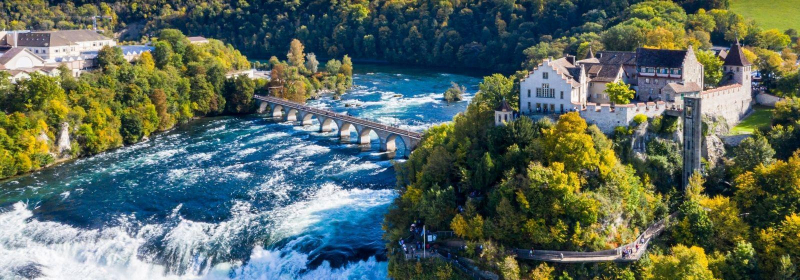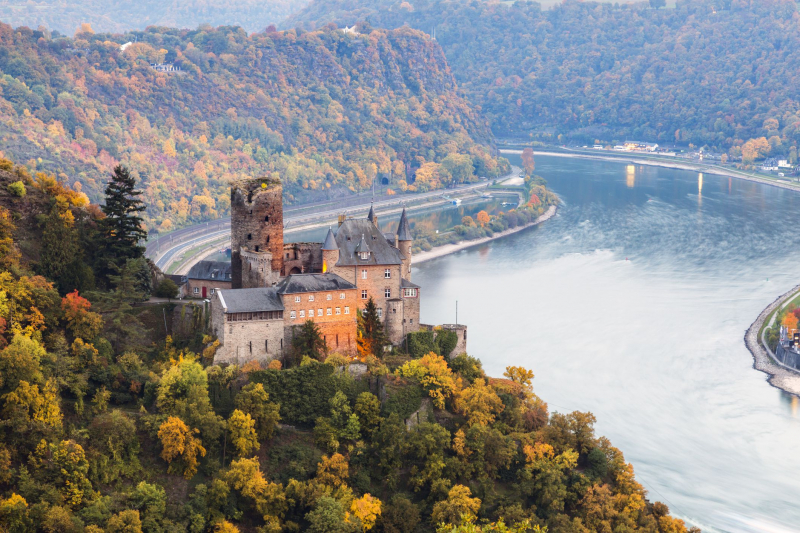Rhine River

The Rhine is one of Europe's major rivers. The river starts in the Swiss canton of Graubünden in the southeastern Swiss Alps, passes across the Swiss-Liechtenstein, Swiss-Austrian, Swiss-German, and then Franco-German borders, then flows largely north through the German Rhineland and the Netherlands until emptying into the North Sea. With a length of around 1,230 km (760 mi) and an average discharge of about 2,900 m3/s (100,000 cu ft/s), it is the second-longest river in Central and Western Europe (after the Danube).
The Rhine and the Danube formed a large part of the Roman Empire's northern inland border, and the Rhine has long been a major navigable waterway for moving trade and supplies deep inland. Its importance as a waterway in the Holy Roman Empire is evidenced by the numerous castles and fortifications built along it. Cologne, Düsseldorf, Rotterdam, Strasbourg, and Basel are among the Rhine's largest and most important cities.
The Rhine has served as a classic illustration of major rivers' alternating roles as political and cultural unifiers and political and cultural boundary lines. The Rhine became a key axis of industrial production because of its low-cost water transportation, which helped to keep raw material prices low: one-fifth of the world's chemical businesses currently manufacture along the Rhine. The Rhine has long been a source of political strife in Europe, but as pollution levels have risen, international concern for environmental safeguards has grown; over 6,000 hazardous chemicals have been identified in Rhine waters.
Length: 1230 km











